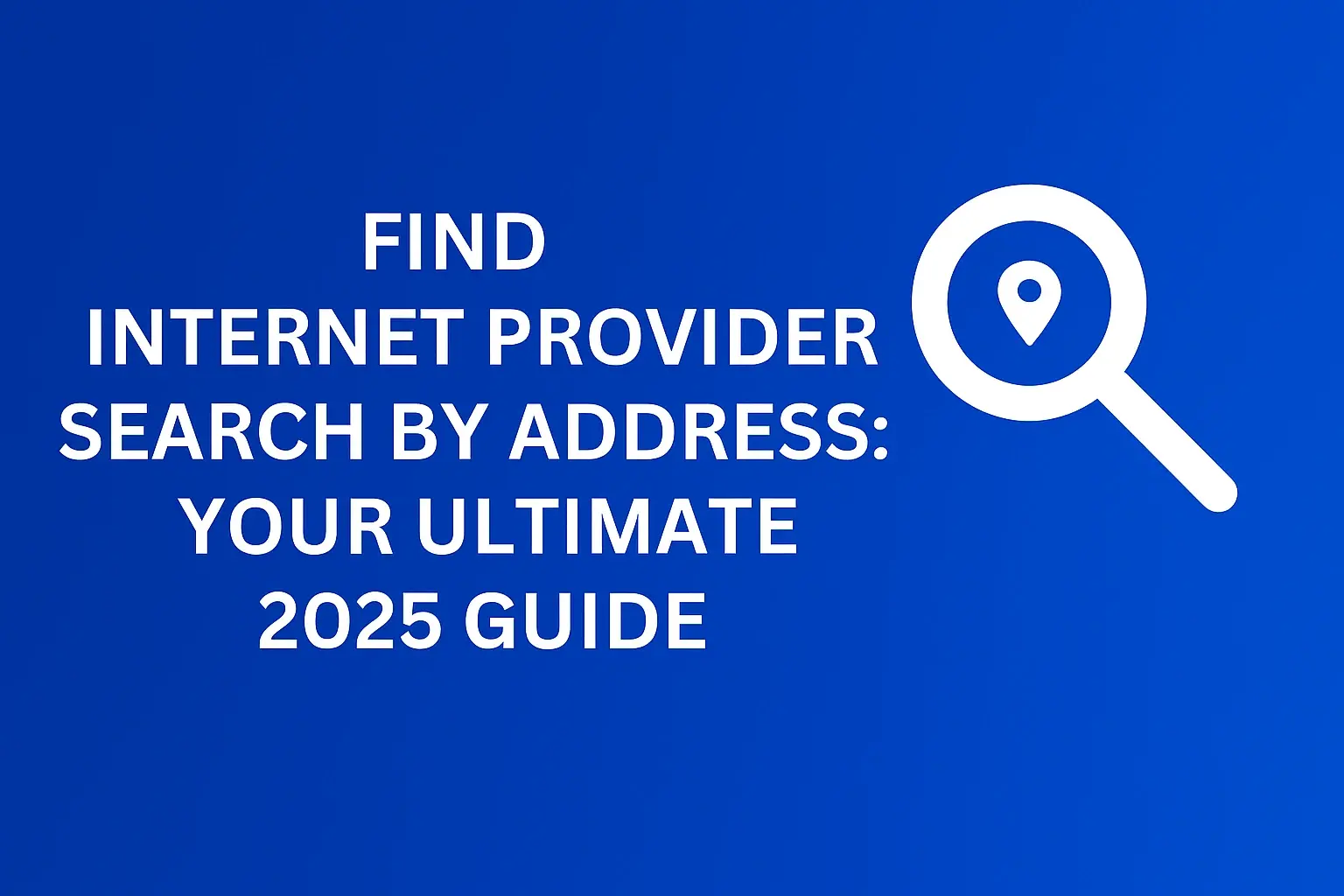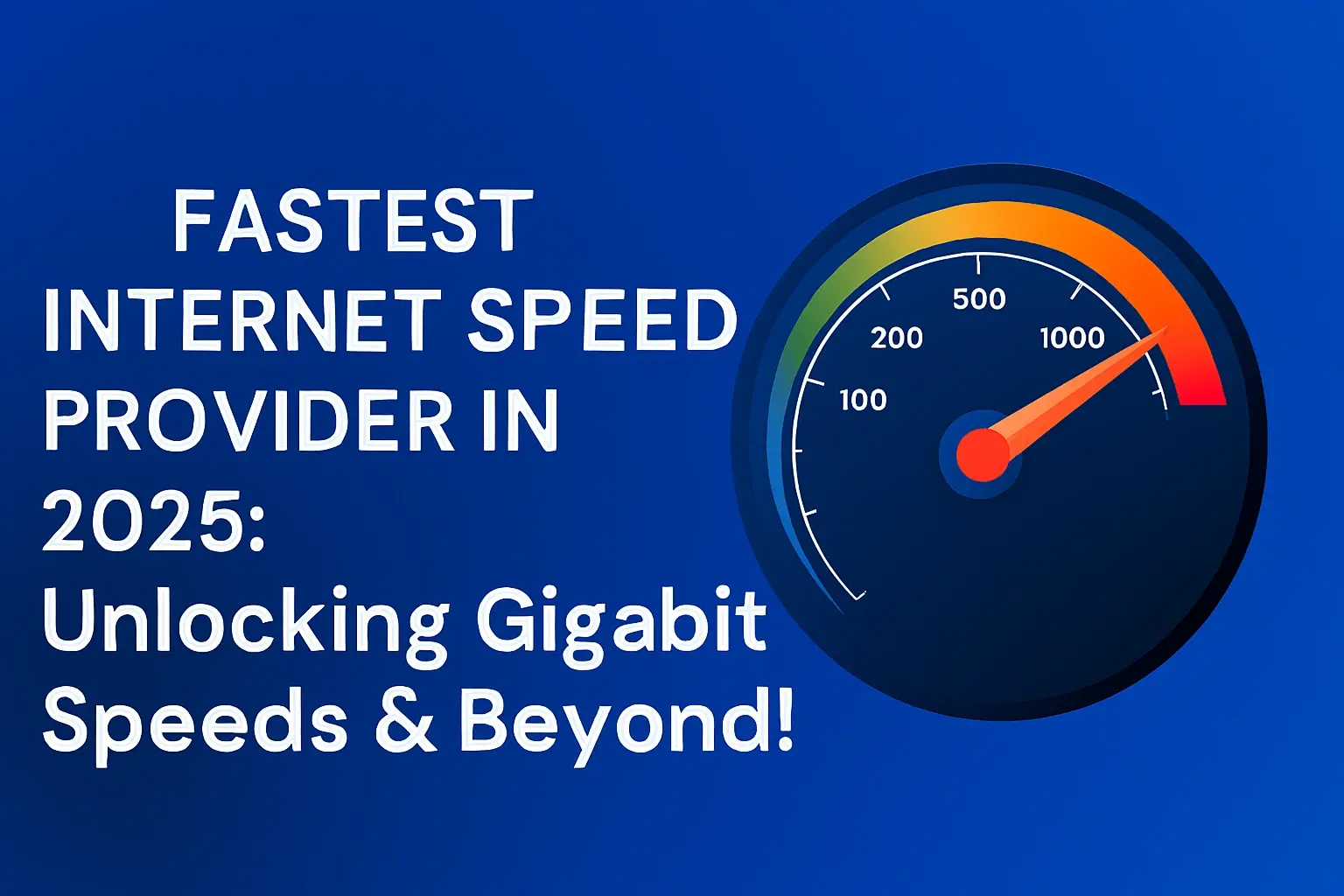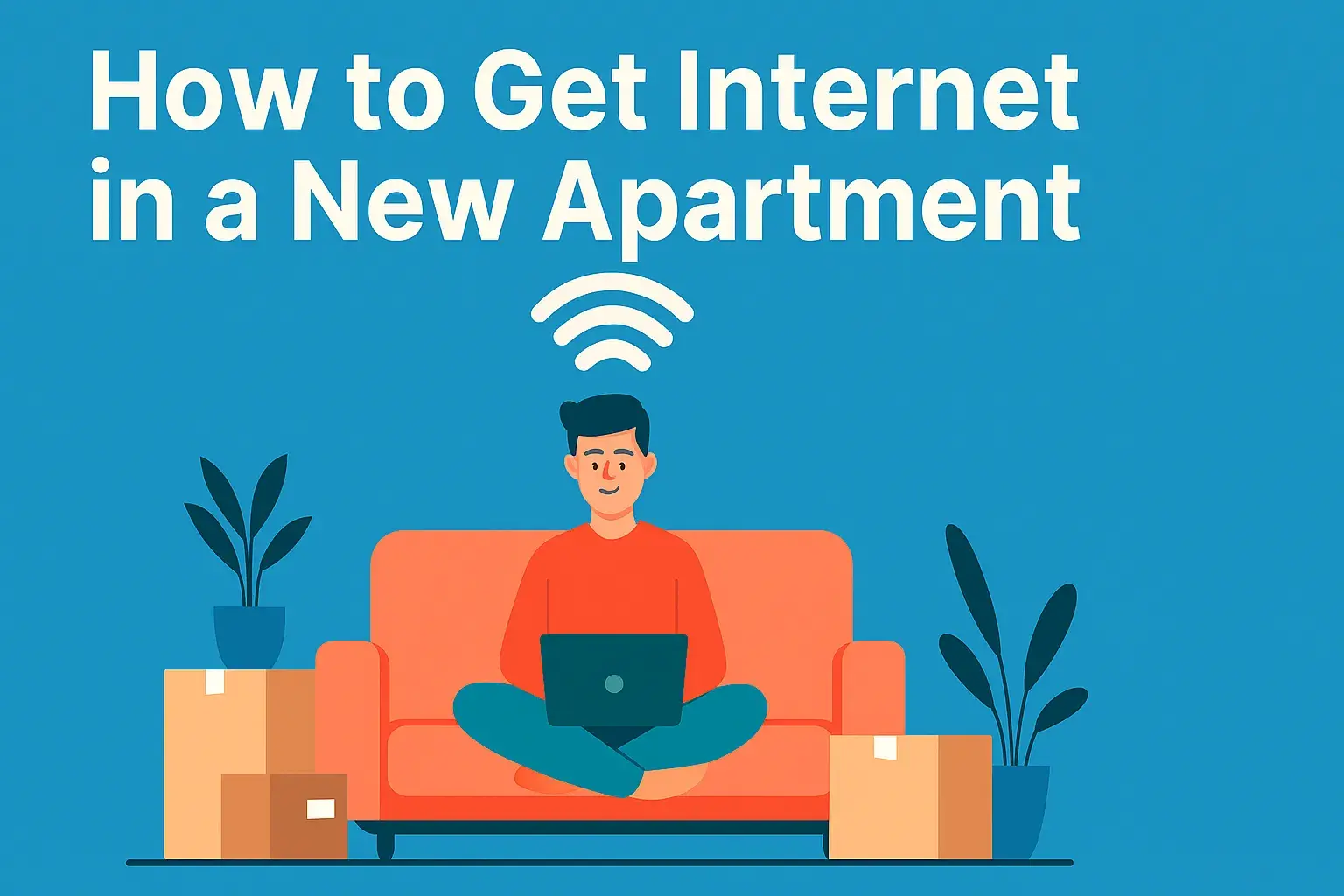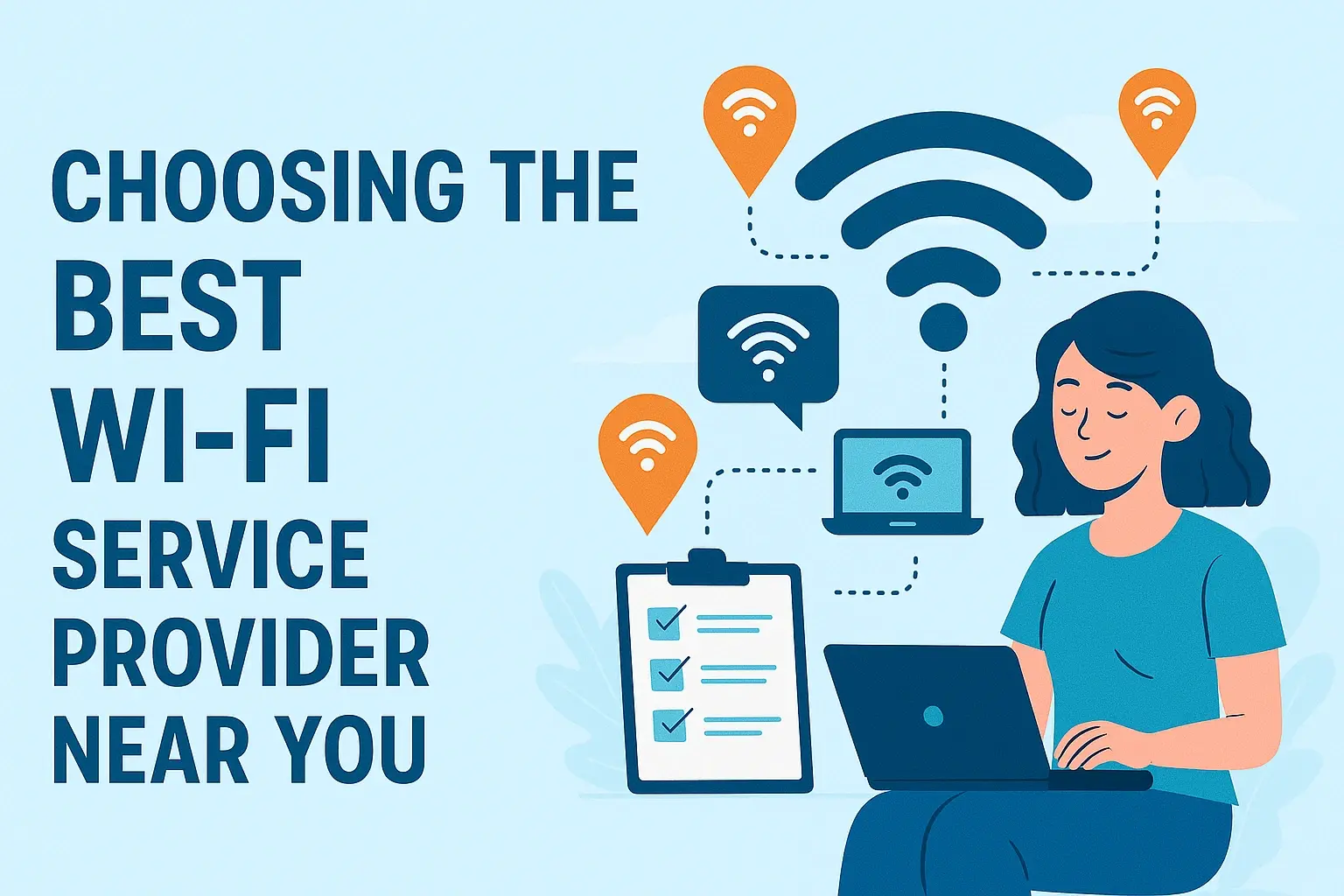Best Internet Providers Available Near You
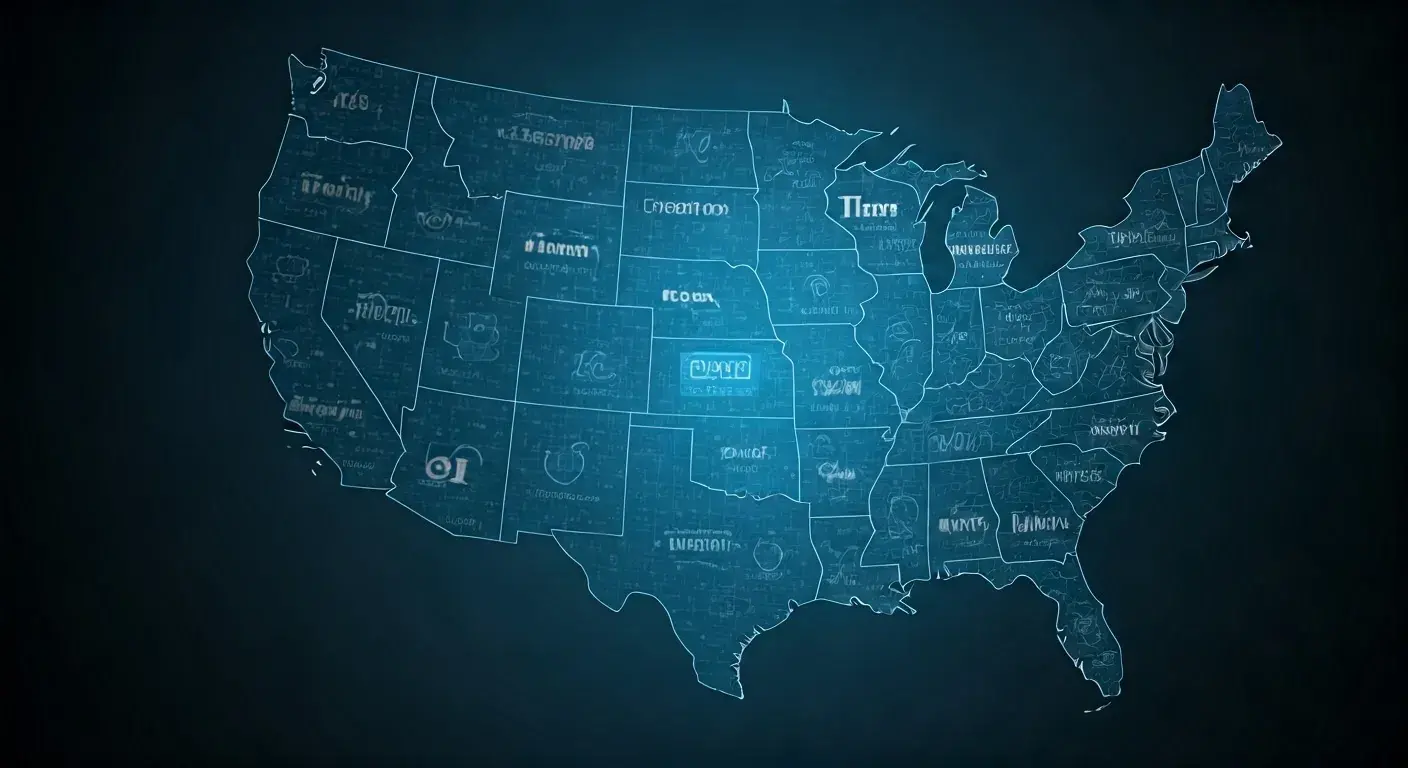
Finding the best internet providers available near you is crucial for seamless online experiences, from remote work to entertainment. This guide cuts through the noise, offering data-driven insights and actionable steps to secure the ideal connection for your home or business in 2025.
Understanding Your Internet Options
The landscape of internet connectivity has evolved dramatically, offering a diverse range of technologies to suit different needs and geographical locations. Understanding these options is the first step in identifying the best internet providers available near you. Each technology has its own set of advantages and disadvantages regarding speed, reliability, and cost. As of 2025, the most prevalent types of internet connections include DSL, Cable, Fiber Optic, Satellite, and 5G Home Internet. The availability of each varies significantly by region, with fiber optic and 5G being the newer, often faster, but less universally available options.
DSL (Digital Subscriber Line)
DSL internet utilizes existing telephone lines to transmit data. It's a widely available technology, especially in areas where fiber optic or cable infrastructure hasn't been extensively deployed. Speeds can vary greatly, typically ranging from 5 Mbps to 100 Mbps download, and significantly lower upload speeds. DSL is generally more affordable than other options but is susceptible to distance from the provider's central office, meaning speeds can degrade the further away you are. It's a viable option for basic internet usage like email, web browsing, and standard-definition streaming.
Cable Internet
Cable internet is delivered through the same coaxial cables that provide cable television. It's a popular choice due to its widespread availability and generally higher speeds compared to DSL. Speeds for cable internet can range from 50 Mbps to over 1 Gbps download, with upload speeds typically being a fraction of download speeds. A key characteristic of cable internet is that it's a shared network; meaning your speed can be affected by the number of users in your neighborhood during peak hours. However, advancements in cable technology have significantly mitigated this issue in many areas. For most households with moderate to heavy internet usage, including streaming, online gaming, and multiple device connections, cable is a strong contender.
Fiber Optic Internet
Fiber optic internet is considered the gold standard for internet connectivity. It uses thin strands of glass or plastic to transmit data as light signals, offering unparalleled speed, reliability, and low latency. Speeds can easily reach 1 Gbps and even 10 Gbps, with symmetrical upload and download speeds being a common offering. Fiber is also more resistant to environmental interference and distance degradation. However, its primary limitation is availability. Fiber networks are expensive to install and are typically found in more densely populated urban and suburban areas. If fiber is available in your vicinity, it's often the best choice for demanding applications like 4K streaming, large file transfers, competitive online gaming, and robust home office setups.
Satellite Internet
Satellite internet is an option for individuals in very rural or remote areas where wired broadband options are non-existent. It works by transmitting data via a satellite dish installed at your home to a satellite in orbit, and then to a ground station. While it offers broad coverage, satellite internet is known for its higher latency (delay in data transmission) due to the vast distance the signal must travel. Speeds can range from 25 Mbps to 100 Mbps download, but upload speeds are often very slow. Data caps are also common with satellite plans. For users with no other options, it provides a connection, but it's generally not ideal for real-time applications like video conferencing or online gaming.
5G Home Internet
A relatively new entrant, 5G Home Internet leverages the fifth generation of cellular technology to provide broadband service wirelessly. It offers speeds comparable to cable and even fiber in some cases, with download speeds often ranging from 50 Mbps to over 1 Gbps. Its main advantage is its ease of setup and potential for widespread availability as cellular networks expand. However, performance can be influenced by signal strength and network congestion, similar to mobile phone service. It's an excellent alternative for those who can't get wired broadband or are looking for a more flexible, often contract-free, option. Availability is rapidly expanding, making it a key technology to check when searching for the best internet providers available near you.
Key Factors When Choosing an Internet Provider
Selecting the right internet provider involves more than just looking at advertised speeds. A comprehensive evaluation considers several critical factors to ensure you get a service that meets your needs, budget, and expectations. In 2025, these factors are more important than ever as internet usage continues to grow and diversify. By carefully assessing these elements, you can make an informed decision and avoid potential frustrations down the line.
Speed Requirements
Your internet speed needs depend heavily on your online activities. For basic browsing and email, 25-50 Mbps is often sufficient. Streaming standard-definition content might require 50-100 Mbps. If you stream in HD or 4K, game online, or have multiple users and devices simultaneously active, you'll likely need speeds of 100 Mbps or higher, with gigabit speeds (1000 Mbps) becoming increasingly common and beneficial for heavy users. Consider the number of devices connected and the types of applications used. For instance, video conferencing for work requires a stable upload speed as well as download speed.
Data Caps and Overage Charges
Many internet plans, especially satellite and some DSL/cable plans, come with data caps – a limit on how much data you can download or upload per month. Exceeding these caps can result in throttled speeds or hefty overage charges. In 2025, unlimited data plans are becoming more prevalent, particularly with fiber and 5G home internet services. Always check the data allowance and the cost of exceeding it. For heavy users, an unlimited plan is usually the most cost-effective and stress-free option.
Contract Length and Early Termination Fees (ETFs)
Most providers offer better pricing in exchange for a long-term contract, typically 12 or 24 months. While this can save money initially, it locks you into a service. Understand the terms of the contract, including any early termination fees (ETFs) if you need to cancel service before the contract ends. Some providers offer contract-free plans, which provide more flexibility but might come at a slightly higher monthly cost. Researching these terms is crucial to avoid unexpected expenses.
Installation Fees and Equipment Costs
Be aware of upfront costs such as installation fees, which can range from $50 to $200 or more. Some providers waive these fees as a promotional offer. You may also need to rent or purchase a modem and router. Renting equipment typically adds $10-$20 per month to your bill. Purchasing your own compatible equipment can save money in the long run, but ensure it meets the provider's specifications. Some providers offer bundled deals that include equipment, which can simplify the process.
Bundling Services
Many internet providers also offer TV, phone, and sometimes even mobile services. Bundling these services can often lead to discounts on your overall monthly bill. However, it's essential to compare the bundled price against the cost of individual services from different providers to ensure you're actually getting a good deal. Sometimes, a bundled package might be more expensive than purchasing services separately from specialized providers.
Customer Service and Reliability Ratings
While not directly related to the service itself, the quality of customer service and the provider's overall reliability are paramount. Look for independent reviews and consumer reports (e.g., from J.D. Power, PCMag, Consumer Reports) that rate providers on customer satisfaction, network uptime, and technical support responsiveness. A provider with excellent speeds but poor customer service can lead to significant frustration when issues arise.
Step-by-Step Guide to Finding Providers Near You
Navigating the options to find the best internet providers available near you can seem daunting, but a structured approach makes the process manageable. This step-by-step guide will walk you through the essential actions to identify and select the most suitable internet service for your specific location and needs in 2025.
Step 1: Determine Your Internet Needs
Before you start searching, clearly define what you'll be using the internet for. Consider:
- Number of users: How many people will be using the internet simultaneously?
- Number of devices: How many devices (smartphones, laptops, smart TVs, gaming consoles, smart home devices) will be connected?
- Primary activities: Are you mainly browsing and emailing, streaming HD/4K video, online gaming, working from home with video conferencing, or downloading/uploading large files?
- Speed requirements: Based on your activities, estimate the download and upload speeds you'll need. Refer to the "Speed Requirements" section for guidance.
- Data usage: Do you anticipate exceeding typical data caps? If so, prioritize unlimited plans.
Step 2: Gather Your Location Information
Your exact address is the most critical piece of information. Internet availability is highly localized. Ensure you have your full street address, including apartment or unit number if applicable. Zip codes can provide a general idea, but specific street addresses are necessary for accurate provider and plan information.
Step 3: Utilize Online Availability Checkers
Most major internet providers have online tools on their websites that allow you to enter your address and see what services are available in your area. Some third-party websites also aggregate this information, allowing you to compare multiple providers at once. When using these tools:
- Be thorough: Check with all major providers and any smaller, local providers that might exist.
- Look beyond advertised speeds: While speeds are important, also note data caps, contract terms, and any promotional pricing.
- Consider different technologies: Don't limit yourself to one type of connection. Check for DSL, cable, fiber, and 5G home internet.
Step 4: Research Local and Regional Providers
Don't overlook smaller, regional providers or municipal broadband initiatives. These can sometimes offer competitive pricing or superior service in specific areas where larger companies have less of a presence. A quick search for "[your city/county] internet providers" can reveal these options.
Step 5: Compare Speeds, Pricing, and Fees
Once you have a list of potential providers and plans, create a comparison chart. Key things to compare include:
- Advertised Download & Upload Speeds
- Monthly Price (and for how long it's guaranteed)
- Data Caps
- Contract Length
- Installation Fees
- Equipment Rental/Purchase Costs
- Promotional Offers and Discounts
Remember to look at the "actual" or "typical" speeds if provided, as advertised speeds are often maximums. For a detailed comparison table, see the "Top Internet Providers in 2025" section.
Step 6: Read Reviews and Check Reliability
Visit reputable review sites and consumer forums to gauge customer satisfaction with the providers you're considering. Look for patterns in feedback regarding:
- Internet uptime and reliability
- Customer service responsiveness and helpfulness
- Technical support quality
- Billing accuracy
Websites like PCMag, CNET, and consumer review platforms can offer valuable insights from real users.
Step 7: Contact Providers Directly
After narrowing down your options, it's often beneficial to contact the providers directly. You can ask clarifying questions about:
- Specific installation timelines
- Any hidden fees not clearly stated online
- Current promotions that might not be advertised
- The exact equipment required and its compatibility
This direct interaction can also give you a feel for their customer service.
Step 8: Negotiate and Make Your Decision
Don't be afraid to negotiate, especially if you have competing offers. Mentioning competitor pricing can sometimes lead to better deals. Once you've weighed all the factors, choose the provider that best balances speed, reliability, cost, and customer service for your specific situation.
Top Internet Providers in 2025: A Comparative Look
Identifying the "best" internet provider is subjective and highly dependent on your location. However, based on market presence, technology offerings, and general consumer feedback in 2025, several providers consistently rank high. This section provides an overview of some of the leading internet service providers (ISPs) in the United States, highlighting their typical offerings. It's crucial to remember that availability and specific plans vary significantly by address.
| Provider | Primary Technology | Typical Download Speeds | Typical Upload Speeds | Availability | Pros | Cons |
|---|---|---|---|---|---|---|
| Verizon Fios | Fiber Optic | 300 Mbps - 2 Gbps | 300 Mbps - 2 Gbps | Northeastern US, select other areas | Symmetrical speeds, high reliability, low latency, excellent for streaming/gaming | Limited geographic availability, can be more expensive |
| AT&T Fiber | Fiber Optic | 300 Mbps - 5 Gbps | 300 Mbps - 5 Gbps | Select areas nationwide, expanding | Symmetrical speeds, competitive pricing, reliable | Availability is still growing, customer service can be mixed |
| Google Fiber | Fiber Optic | 1 Gbps - 2 Gbps | 1 Gbps - 2 Gbps | Select cities, expanding slowly | Simple pricing, high speeds, excellent performance | Extremely limited availability, expansion is slow |
| Xfinity (Comcast) | Cable | 50 Mbps - 2 Gbps | 10 Mbps - 100 Mbps | Nationwide | Widely available, high download speeds, bundle options | Upload speeds are slower than download, data caps on some plans, customer service can be inconsistent |
| Spectrum (Charter) | Cable | 200 Mbps - 1 Gbps | 10 Mbps - 35 Mbps | Nationwide | No data caps on most plans, widely available, no annual contracts | Upload speeds lag behind download, customer service can be inconsistent |
| Cox Communications | Cable | 100 Mbps - 2 Gbps | 10 Mbps - 35 Mbps | Select regions (e.g., Arizona, California, Nevada) | Good speeds, bundle options, reliable | Limited service areas, data caps on some plans |
| T-Mobile Home Internet | 5G Home Internet | 50 Mbps - 245 Mbps (average) | N/A (variable) | Expanding nationwide | No data caps, no annual contracts, easy setup, competitive pricing | Speeds can vary based on signal strength and network congestion, upload speeds not guaranteed |
| Verizon 5G Home Internet | 5G Home Internet | 50 Mbps - 300 Mbps (average) | N/A (variable) | Select cities, expanding | No data caps, no contracts, competitive pricing, often bundled with mobile plans | Availability limited to specific areas, speeds can fluctuate |
| HughesNet | Satellite | 25 Mbps - 100 Mbps | 3 Mbps | Nationwide (rural areas) | Available almost anywhere, decent download speeds for basic use | High latency, strict data caps, slower than terrestrial options, not ideal for real-time activities |
| Viasat | Satellite | 25 Mbps - 150 Mbps | 3 Mbps | Nationwide (rural areas) | Broad availability, higher download speeds than some competitors | High latency, data caps, can be expensive for the performance |
This table serves as a general guide. Always use the provider's website with your specific address to confirm available plans, speeds, and pricing. For instance, if you are in a major metropolitan area, you are far more likely to find fiber options from AT&T, Verizon, or Google Fiber. If you are in a more suburban or rural area, cable providers like Xfinity, Spectrum, or Cox are more likely to be your primary options, with 5G home internet and satellite as alternatives.
Evaluating Internet Performance: Speed, Latency, and Reliability
Beyond just the advertised numbers, understanding key performance metrics like speed, latency, and reliability is crucial for selecting the best internet providers available near you. These factors directly impact your online experience, especially for activities that require real-time data transmission. In 2025, as internet demands increase, these metrics become even more critical for ensuring a smooth and frustration-free connection.
Download and Upload Speeds Explained
Download speed is the rate at which your device receives data from the internet. This is what most people think of when discussing internet speed and is important for streaming video, browsing websites, and downloading files. Speeds are measured in megabits per second (Mbps) or gigabits per second (Gbps). 1 Gbps equals 1000 Mbps.
Upload speed is the rate at which your device sends data to the internet. This is important for video conferencing, uploading photos and videos to social media or cloud storage, online gaming, and making VoIP calls. Many residential internet plans, especially cable and DSL, offer significantly lower upload speeds than download speeds. Fiber optic internet, however, often provides symmetrical speeds, meaning upload and download speeds are the same.
How much speed do you need? (2025 estimates):
- Basic Use (Web browsing, email, social media): 25-50 Mbps download
- Standard Streaming (HD video, music): 50-100 Mbps download
- Heavy Streaming (4K video, multiple users): 100-300 Mbps download
- Online Gaming & Video Conferencing: 100+ Mbps download, and importantly, 10+ Mbps upload (higher is better for gaming responsiveness and clear video calls)
- Large File Transfers & Professional Use: 500 Mbps - 1 Gbps+ download and upload
Latency (Ping)
Latency, often referred to as "ping," measures the time it takes for a data packet to travel from your device to a server and back. It's measured in milliseconds (ms). Low latency is critical for activities that require immediate responses, such as online gaming, live video streaming, and real-time trading.
- Low Latency (under 50 ms): Ideal for online gaming and real-time applications.
- Moderate Latency (50-100 ms): Generally acceptable for most activities, but may cause slight delays in gaming.
- High Latency (over 100 ms): Noticeable delays in gaming, video conferencing, and other real-time interactions. Satellite internet typically has very high latency.
When comparing providers, look for latency figures if available, or consider the technology type. Fiber optic internet consistently offers the lowest latency.
Reliability and Uptime
Reliability refers to how consistently your internet connection is available and performs without interruptions. Uptime is the percentage of time the service is operational. Most reputable ISPs aim for 99.9% uptime, which translates to less than an hour of downtime per month. However, this can vary.
- Factors affecting reliability:
- Technology: Fiber optic is generally the most reliable due to its resistance to interference. Cable can be affected by network congestion. DSL can be affected by line quality and distance. Satellite is susceptible to weather.
- Infrastructure: The quality and maintenance of the provider's network in your specific area play a significant role.
- Weather: Satellite and fixed wireless services can be impacted by severe weather conditions.
Checking independent reviews and consumer reports can provide insights into a provider's actual reliability in your region.
Bandwidth vs. Speed
It's important to distinguish between bandwidth and speed. Bandwidth is the maximum amount of data that can be transferred over your connection in a given time. Speed is the actual rate of data transfer. Think of bandwidth as the width of a pipe and speed as the flow rate through that pipe. A wider pipe (more bandwidth) allows for faster flow (higher speed), especially when multiple users or devices are consuming data simultaneously.
Understanding Internet Pricing and Plans
The cost of internet service can vary significantly, and understanding the pricing structures is key to finding the best value. In 2025, providers often use promotional pricing, multi-year contracts, and bundled deals to attract customers. Being aware of these tactics will help you avoid surprises and secure the most cost-effective plan. The best internet providers available near you will offer transparent pricing that aligns with your budget and needs.
Promotional vs. Standard Pricing
Most ISPs advertise a low monthly price that is only valid for a limited period, typically the first 12 or 24 months of a contract. After this promotional period, the price will increase to the standard rate, which can be substantially higher. Always ask for the standard rate after the promotion ends to understand your long-term cost. Some providers offer discounts for signing up for longer contracts or for bundling multiple services.
Tiered Speed Plans
Internet plans are typically categorized by speed tiers. Higher speeds come with higher monthly costs. Providers offer a range of plans, from basic (e.g., 50 Mbps) to ultra-fast (e.g., 1 Gbps or more). It's essential to choose a speed tier that matches your actual usage to avoid overpaying for unused capacity or being frustrated by slow speeds.
Data Caps and Overage Fees
As mentioned earlier, data caps are a common feature of many internet plans, especially satellite and some cable/DSL offerings. These caps limit the amount of data you can use monthly. If you exceed your data allowance, you may face:
- Throttling: Your internet speed will be significantly reduced for the remainder of the billing cycle.
- Overage Charges: You will be charged a fee for each gigabyte (GB) or terabyte (TB) of data used beyond your limit. These charges can add up quickly.
In 2025, many fiber and some 5G home internet plans offer unlimited data, which is ideal for households with high internet consumption. Always verify the data policy before signing up.
Bundling Discounts
Providers often offer discounts when you bundle internet service with other services like TV, phone, or mobile plans. While bundling can lead to savings, it's crucial to compare the total cost of the bundle against purchasing services separately from different providers. Sometimes, the perceived savings aren't as significant as they appear, especially if you don't need all the bundled services.
Installation and Equipment Fees
Be prepared for potential upfront costs:
- Installation Fee: This covers the cost of setting up your internet service. It can range from free (with promotions) to over $100.
- Equipment Rental Fee: Most providers charge a monthly fee to rent a modem and router. This can add $10-$20 per month to your bill. Purchasing your own compatible equipment can save money in the long run, but ensure it meets the provider's specifications and is compatible with the speeds you're subscribing to.
Contract Buyouts and Promotions
Some providers offer incentives like contract buyouts to entice customers to switch from their current ISP. These can cover the early termination fees charged by your old provider. Keep an eye out for limited-time promotions, such as free installation, discounted first few months, or free equipment upgrades.
Understanding Your Bill
Once you have internet service, take the time to understand your monthly bill. Look for any unexpected charges, confirm that the pricing matches what you agreed upon, and note when promotional periods end. If you have any doubts, contact customer service immediately.
The Importance of Customer Service and Support
While speed and price are often the primary considerations when choosing an internet provider, the quality of customer service and technical support can significantly impact your overall satisfaction. In 2025, with the increasing reliance on stable internet for work, education, and entertainment, prompt and effective support is more critical than ever. A provider's commitment to customer care can be the difference between a minor inconvenience and a major disruption.
When Do You Need Customer Support?
You might need to contact your ISP for various reasons:
- Installation Issues: Scheduling, technician visits, or initial setup problems.
- Technical Problems: Slow speeds, intermittent outages, connection drops, or equipment malfunctions.
- Billing Inquiries: Understanding charges, disputing fees, or inquiring about plan changes.
- Service Changes: Upgrading or downgrading your plan, or adding/removing services.
- Moving: Transferring service to a new address.
Channels of Support
Reputable ISPs offer multiple channels for customer support:
- Phone Support: Often the most direct way to speak with a representative, but can involve long wait times.
- Online Chat: A convenient option for quick questions, allowing you to multitask.
- Email Support: Suitable for less urgent inquiries where detailed explanations are needed.
- Self-Service Portals/FAQs: Many providers have extensive online knowledge bases, troubleshooting guides, and account management tools that can resolve common issues without direct contact.
- Social Media: Some providers have dedicated support teams on platforms like Twitter.
What to Look for in Good Customer Service
- Responsiveness: How quickly do they answer your calls or respond to your messages?
- Knowledgeable Staff: Are the representatives well-trained and able to diagnose and resolve issues effectively?
- First-Call Resolution: Can they solve your problem on the first contact, or do you need to follow up multiple times?
- Empathy and Professionalism: Do they treat you with respect and understanding, even when you're frustrated?
- Availability: Are support channels available during hours that are convenient for you? Are they 24/7?
How to Gauge Customer Service Quality
Before committing to a provider, research their customer service reputation:
- Independent Reviews: Websites like PCMag, CNET, Consumer Reports, and various tech forums often publish rankings and user reviews that include customer service ratings.
- Customer Satisfaction Scores: Look for data from sources like J.D. Power, which surveys consumers on their satisfaction with ISP customer service.
- Social Media Monitoring: See what customers are saying about the provider on platforms like Twitter or Reddit.
- Ask Neighbors/Friends: Personal recommendations from people in your area can be invaluable.
While high speeds and low prices are attractive, a provider with consistently poor customer service can lead to ongoing frustration. Prioritizing a provider with a good reputation for support can save you time and headaches in the long run, especially when searching for the best internet providers available near you.
Making Your Final Decision
After navigating through the options, understanding the technologies, and evaluating providers, you're ready to make your final decision. This stage requires synthesizing all the information you've gathered to select the internet service that best aligns with your unique circumstances. The goal is to find a balance between performance, cost, and reliability that meets your household's specific needs in 2025.
Revisit Your Priorities
Take a moment to review the initial assessment of your internet needs. Were you prioritizing the absolute fastest speeds for gaming, or was budget the primary concern for basic web browsing? Remind yourself of the key factors that matter most to you:
- Speed: How much download and upload speed do you truly require?
- Budget: What is your maximum comfortable monthly spend?
- Reliability: How critical is uninterrupted service for your work or daily activities?
- Data Usage: Do you need an unlimited plan, or will a capped plan suffice?
- Contract Flexibility: Do you prefer the freedom of no contract, or are you comfortable with a long-term commitment for a lower rate?
- Customer Service: How important is responsive and effective support to you?
Compare Your Top Contenders
You should have a shortlist of 2-3 providers by now. Create a final comparison chart, focusing on the specific plans available at your address. Pay close attention to:
- The total monthly cost, including all fees and taxes, after any initial promotional periods expire.
- The actual speeds offered (download and upload).
- The data allowance and the cost of exceeding it.
- The contract length and any associated early termination fees.
- The installation and equipment costs.
Read the Fine Print
Before signing any agreement, take the time to read the terms and conditions carefully. Pay special attention to clauses regarding:
- Price increases after promotional periods.
- Data cap policies and throttling.
- Equipment return policies.
- Cancellation procedures and fees.
If anything is unclear, don't hesitate to ask the provider for clarification.
Consider Future Needs
While it's impossible to predict the future perfectly, think about whether your internet needs might change in the coming years. Are you planning to add more smart home devices, upgrade your gaming setup, or start a home-based business? Choosing a plan with a little extra capacity might be a wise investment to avoid needing an upgrade soon after installation.
Trust Your Gut (and Research)
Ultimately, the best internet provider is the one that offers the best combination of service, value, and support for your specific situation. If one provider offers slightly better speeds but has a history of poor customer service, and another offers slightly lower speeds but is known for its reliability and support, you'll need to weigh which factor is more important to you. Rely on the objective data you've gathered, but also consider your personal preferences and priorities.
By following this comprehensive guide, you can confidently identify and select the best internet providers available near you, ensuring a reliable and high-performing internet connection that meets all your needs in 2025 and beyond.

